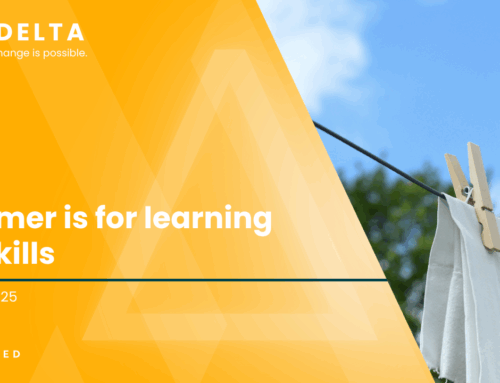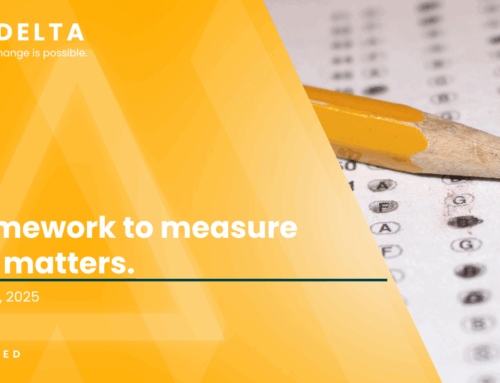The Delta Issue #29
Louisiana’s story isn’t perfect, but it is replicable
Two weeks ago, we introduced The Louisiana Story: an overview of a journey we know well. Today, we’re breaking down the steps that helped Louisiana get to where it is now — and sharing tangible to-dos for how your state can do the same.
What makes Louisiana’s story worth telling isn’t that it’s perfect. It’s that it’s replicable. State leaders who came before and after our time at the Department of Education held fast to a clear vision for kids. Our approach centered on a clear theory of action: If you define what an excellent student experience should look like, map out the shifts you want to see from every player at every level of the education system, and pull the right levers consistently, you can improve outcomes for kids. Let’s break down what that means.
To make sense of the framework we’re about to share, you need to start with three key pieces: Vision, Players, and Levers.
Vision
Get specific, because this will be your blueprint for every action that comes next. Ask yourself: What is it like for kids in the classroom today, and what do you want it to be like? Make it vivid.
In Louisiana, here’s what our vision looked like in practice: In all 3rd-8th grade classrooms, students will read meaningful, complex texts that build their knowledge of the world. They will express their ideas through writing and speaking, while teachers facilitate student learning to deepen comprehension rather than focus on isolated reading skills.
Players
If you’re a Delta subscriber, you’ve probably read about the “implementation chain” before. This is the chain of all the adults who influence what happens in any given classroom in your state. If you want kids to experience something new, all these adults have to do something new. I encourage state leaders to work their way up the chain from the classroom to the statehouse. For example, to achieve the state’s vision of getting all 3rd-8th grade classrooms reading on grade level:
- Teachers had to plan and facilitate instruction using new materials so that students comprehend increasingly complex texts
- Principals had to ensure all reading teachers (including core subject teachers, coaches, specialists, and special education teachers) were trained on the curriculum, establish dedicated collaboration time, and use aligned teacher observation tools
- District Leaders had to purchase new curriculum and procure professional learning partners to train school leaders and teachers
Once we identify the players and what they need to do, the next step is making it easier for them to take action. This is where the statehouse is critical — the state holds the levers, and needs to be ready to pull them.
Levers
When Jessica and I talk about “levers,” we’re talking about all the influencing mechanisms states have at their disposal that can change what kids experience in the classroom.
Here’s an analogy: Say you want to cook dinner on weeknights instead of ordering takeout. There might be all kinds of things stopping you. Maybe your recipes take too long. Maybe when you go to the fridge, all you have is a gallon of milk and a jar of old pickles. Maybe you’ve got plenty of fresh vegetables, but you’re too tired to chop them. There is a “lever” for all of these problems. You could purchase a cookbook full of 20-minute recipes. You could set up grocery delivery for Saturdays. Or you could meal prep on Sundays so that on Tuesday night, your veggies are chopped and ready to go. Those small changes — those levers — make your vision (cooking on weeknights) easier to achieve.
The principle is the same in education. States can use levers like funding, accountability, and regulations to make it easier and more attractive for the players in your implementation chain to take the desired action and improve the student experience. For state leaders, levers include:
- Standards & Assessments – Raising expectations and ensuring assessments measure real learning.
- Funding – Aligning budgets to invest in what matters, like Louisiana’s Super App.
- Accountability – Tracking transparent school and district letter grades to track progress.
- Regulations & Guidance – Breaking down barriers, like curating a marketplace of high-quality curricula and professional learning.
- Support & Training – Building targeted professional development, like the 3x/year School Support Institute for the 500 lowest-performing schools.
- Communications – Streamlining messages to educators, such as a dedicated newsletter for principals and teachers.
To make this usable, we’ve created a table that you can copy and adapt for your state. Ask yourself: In order to achieve our vision for students, who needs to do what? And what state levers can I use to elicit that action and provide the support they need to do it well?
This checklist is a roadmap based on the levers we used in Louisiana when we were there — what helped align districts, principals, and teachers behind a shared vision. It’s not a complete history of Louisiana’s education policies, but it does offer a framework for states looking to take action. You can click on the tables below for a downloadable version to use as a resource.
If you’re asking, How can I make this work in my state? Start here. Louisiana’s story doesn’t have to be unique.



For those in early childhood education, you’re next — we’re developing a framework specifically for you, so stay tuned.
Let’s Get Muddy
🔗 Resources & Further Reading:
- Catch up on Part 1 of this series: The Louisiana Story
- Our team member Catherine Pozniak shared a great post about Louisiana’s Super App. Check it out here.
- John White , former Louisiana State Superintendent, shared this video about what contributed to Louisiana’s NAEP gains. Watch it here.
We know this table doesn’t capture everything. For other Louisiana team members – what did we miss? And for those outside Louisiana — where do you see the biggest opportunity to pull the right levers in your state? Let us know in the comments below!





